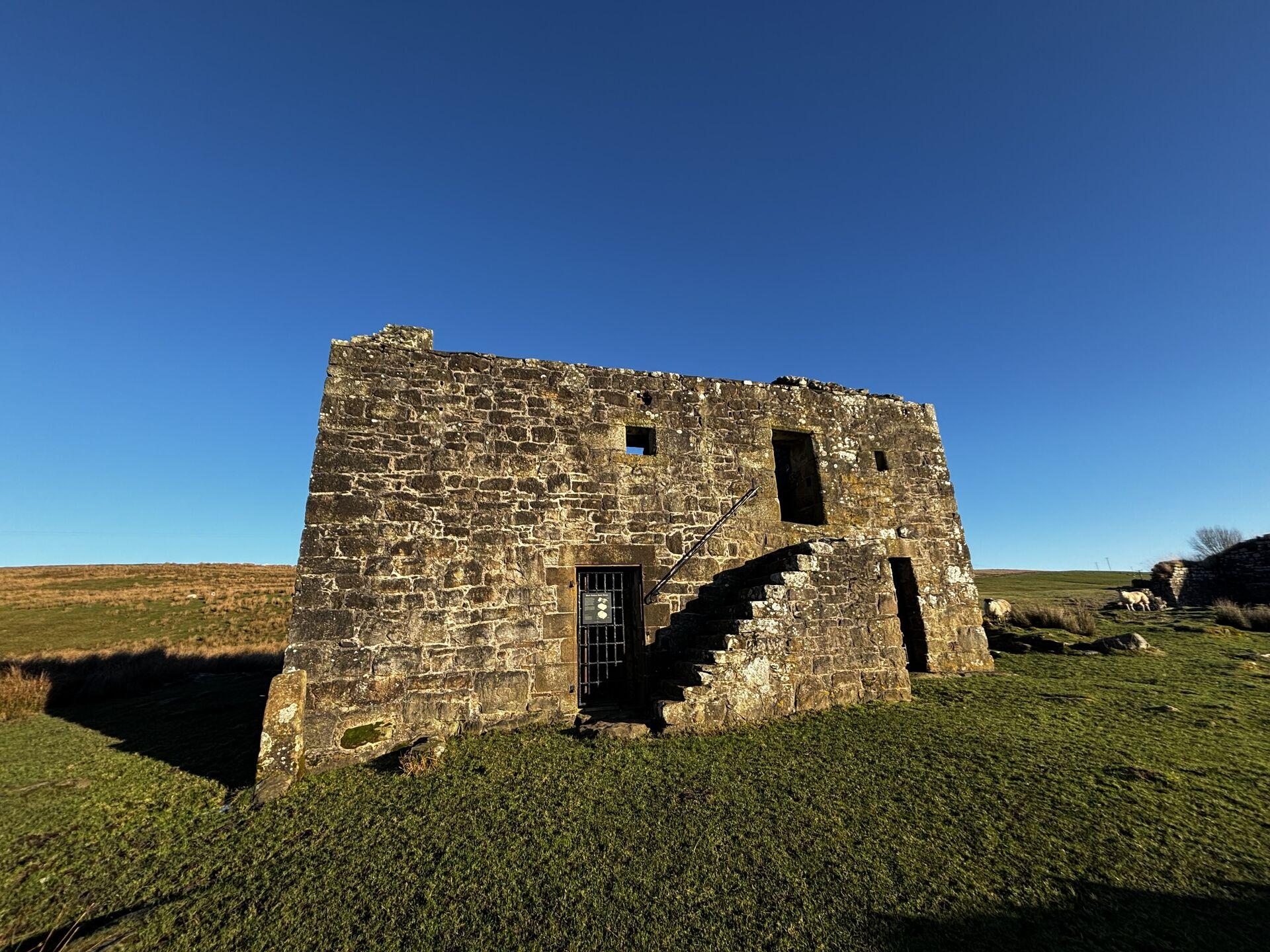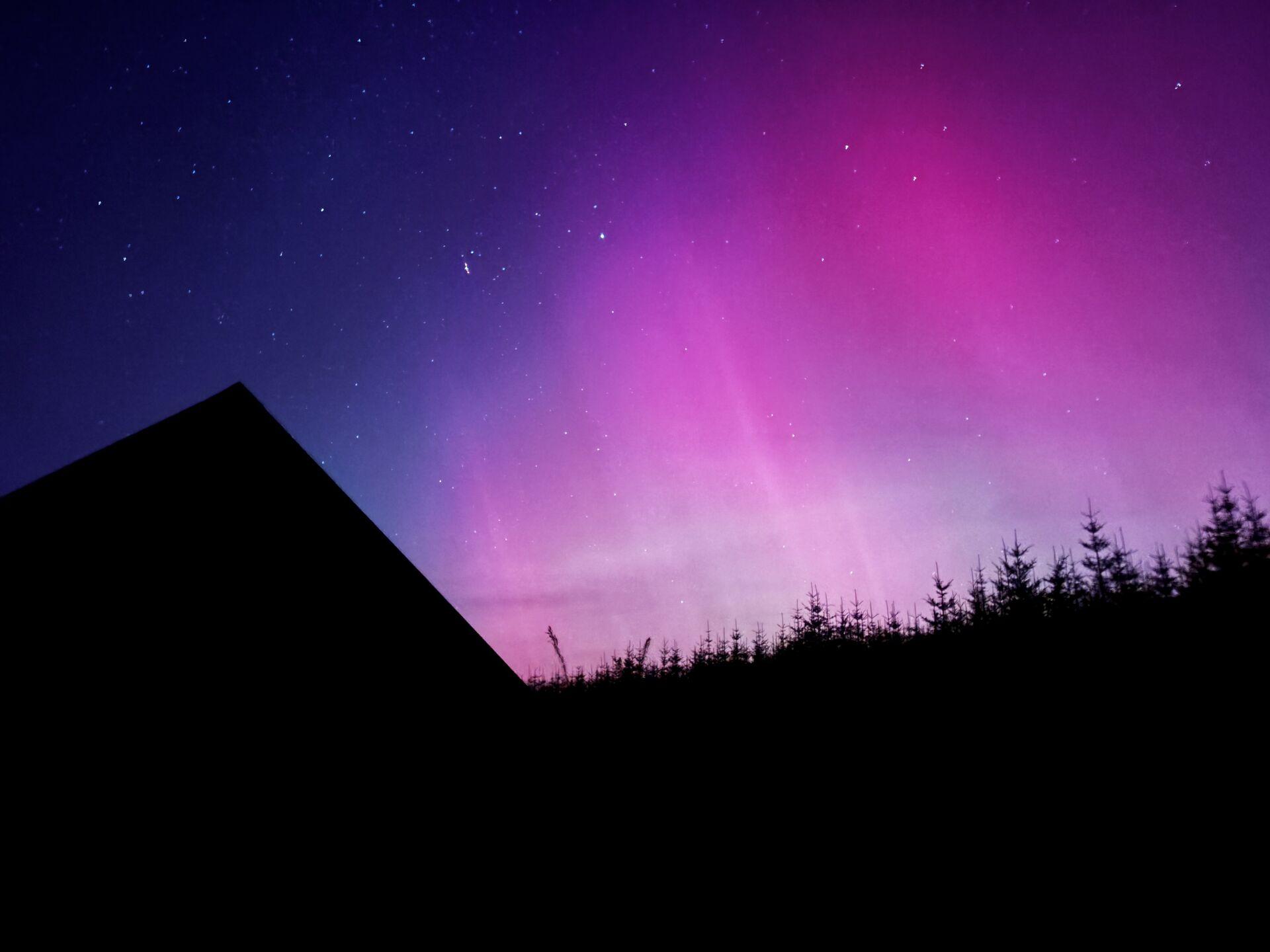David's Bob Graham
When we get out of the car at Honister the windows of the shop are all boarded up and the gates are closed. It’s a little before 7 am. It’s not raining, per se; but there’s water hanging in the air getting everything sort of damp in a way that really suggests rain.
We head up towards Dubs Quarry and cut around on Moses Trod towards the shoulder of Great Gable. Kirk Fell peeks out from between curtains of mist; the rain waxes and then wanes again. I think about David on the moraines around Bow Fell. He’s half an hour behind his schedule, which isn’t too worrying since he’s aiming for a 23-hour Bob.
We descend from the clouds amid the din of Gable Beck, much fuller now than it was earlier this summer. Wasdale gleams through the mist with reflected sunlight.

At Wasdale Head, we meet a man with a “I drive a Jaguar” accent asking for the route up to Scafell Pike. He balks when he’s told that the best trailhead is the National Trust car park, three-quarters of a mile up the road. I wonder dimly how his blue jeans and fancy boots will fare on the sodden climb. I wonder if he’ll get that far.
We hunker down in the National Trust car park with plenty of time to spare, watching David’s dot move across the crags on the tracking app he’s provided us. He loses a bit more time; it’s enough that we start to get nervous. We take turns in Nina & Adrian’s warm van and chain-drink decaf coffee. We visit the drop toilet with its smooth plastic seat. We try not to look down.
Before long, Nina spots David through her binoculars coming down the screes below Scafell Pike. They round a wall and disappear out of sight. Minutes later they emerge from the woods and into the car park. I notice that all four runners have big brown mud streaks up their backs.
David doesn’t look much worse for wear. He inhales some rice pudding, takes a couple of painkillers, and launches out of the car park and onto the road with Tamsin, Nick, and I in tow. He’s about an hour behind schedule; we’ll need to find some time on the leg 4 tops.
Soon we’re climbing Yewbarrow. The rain forbears; it is a small mercy. Wasdale shrinks below us. It occurs to me that Nina is probably watching our climb through her binoculars. I look back, but I can’t see her.
We crest the shoulder of Yewbarrow and reach the summit. Nick marks down the time and we scurry off towards Red Pike. I try to keep up conversation; David seems in decent spirits. I don’t know how much of our job as supporters is to try and keep up morale. Probably a good deal of the job.
The climb to Red Pike is nowhere steep, but its length makes it a slog. On the Bob Graham timing chart it proves the equal of Yewbarrow for time. We crest the summit, then a brief interlude before the wall at the top of Scoat Fell comes into view.
Steeple comes and goes, then the traverse across the flank of Black Crag and the steep screes up Pillar. From the summit of Pillar we can see the sun shining on the Irish Sea.
Then the long descent towards Kirk Fell, rocky in places but generally joggable. We pass a runner wearing a number coming up the other way, first place (by a long shot) in the Ennerdale Horseshoe fell race. His competitors are so far behind that we think at first that he’d lost the route and was scrambling back into position. It turns out that he’s just famous.
We dodge more runners on the climb up Kirk Fell Crags and then start the descent. Halfway down, David loses his balance on a wet boulder and topples backwards onto an excessively sharp rock. He lies in shock for a minute; we wonder how long before we should call Mountain Rescue. He wiggles his fingers and toes, and then miraculously, gets back up and continues the descent. He’s clearly shaken but is moving well. By the time we get to the pass at the foot of Gable, the only evidence of his fall is a scuffmark on the back of his jacket.

He powers up Gable, then over Green Gable and on to Brandreth and Grey Knotts. There’s a bit of confusion about which summit of Grey Knotts we’re meant to visit, but our proximity to Honister highlights the time crunch: David is now 20 minutes or so behind 24-hour pace. The mood is resigned as we descend to Honister; David says that he’s going to see it through regardless of time.
He spends less than a minute at Honister, swapping out water and handing off poles. Tamsin and I decide to accompany him on leg 5. No one mentions David’s pace or expected finish time until halfway up Dale Head, when Geoff (on nav) announces that from the top onwards we’re going to pick up the pace.
He’s not joking.
Geoff pulling us all on, we fly down Dale Head as if we’re at a fell race and then run full-tilt all the way up to Hindscarth. The wind picks up and the clouds blot out the fading sun. Keswick lurks somewhere in the murk off to the right. David has a fixated look in his eye.
The climb to Robinson is the hardest of the day. Far ahead, there’s a Herdwick sitting in the middle of the path just below the crest of the hill and it somehow never seems to get any closer. My chest heaves and my legs burn. But then I see the characteristic craggy crest at the summit and know we’ve made it.
Over the driving wind at the top of Robinson, Geoff says that we have an hour and a half to get to Keswick. If we can make Newlands Church in half an hour, that gives David an hour to run the 5 miles back to Keswick. It’s on.
We fly down the side of Robinson, Geoff picking out grassy trods around the crags to keep the pace up. Soon we’re on the trail out through the gorse and the gates and the holiday cottage with the funny name and charging down the road. David runs at a 4:30/km pace down to the church. I don’t know how he does this with more than 90 km in his legs already.
I try to keep up, but run out of steam around Swinside. David charges on with his leg 5 supporters and I hobble the remaining 3km back to Keswick. When I arrive at the Moot Hall, I find David in a crowd of friends, a beer in his hand, and a massive smile on his face.








